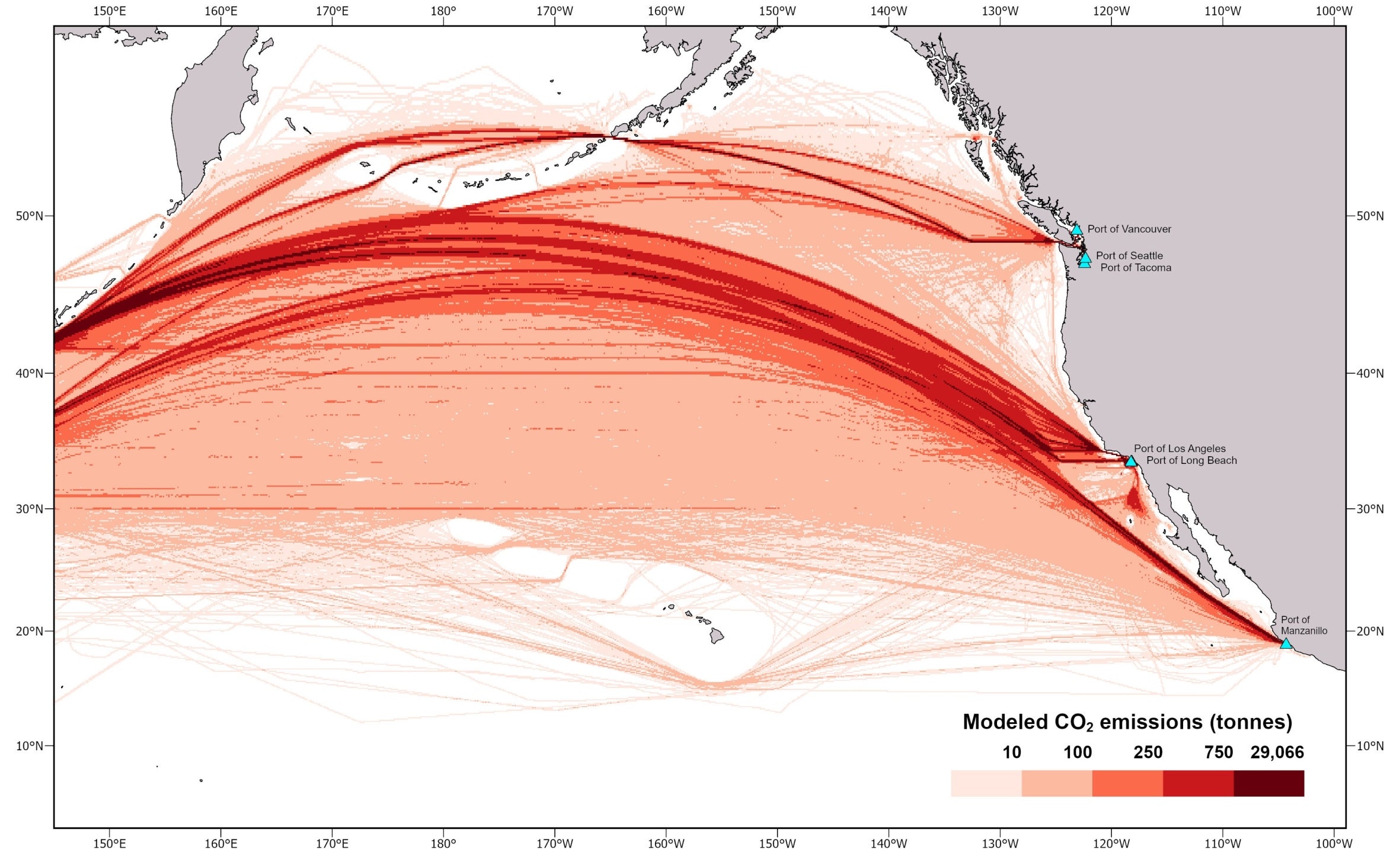2025-05-29 カリフォルニア大学サンタバーバラ校(UCSB)
 Photo Credit:Rachel Rhodes et al
Photo Credit:Rachel Rhodes et al
The researchers’ model of carbon emissions generated by cargo vessels crossing the Pacific Ocean from 2017-2023
<関連情報>
- https://news.ucsb.edu/2025/021895/cheap-and-easy-potential-solution-lowering-carbon-emissions-maritime-shipping
- https://www.sciencedirect.com/science/article/pii/S0025326X25006265
コンテナ輸送によるCO2排出に関する港湾待ち行列システムの調査 Investigation of a port queuing system on CO2 emissions from container shipping
Rachel Rhodes, Callie Leiphardt, Hillary S. Young, Jessica Morten, Byron Hayes, Jen Dillon, Wendy Louttit, Mark Powell, Douglas J. McCauley
Marine Pollution Bulletin Available online: 19 May 2025
DOI:https://doi.org/10.1016/j.marpolbul.2025.118151
Highlights
- Assessed emissions impact of port queuing system using bottom-up model.
- CO2 emissions decreased 16–24 % per voyage after system implementation.
- Container lines showed variation in emissions efficiency under new system.
- Digital queues offer incremental yet scalable steps toward decarbonization.
Abstract
The maritime shipping industry is pursuing a diversity of strategies to meet its decarbonization goals, yet inefficiencies like traditional “first-come, first-served” port arrival systems, which encourages vessels to race to port to wait offshore, remain largely unaddressed despite their significant emissions impact. In 2021, the Ports of Los Angeles and Long Beach implemented a new queuing system for container ships that instead assigns predetermined positions when vessels depart their last port of call. Our research evaluates whether this system, implemented primarily to reduce port congestion during major disruptions, also reduces CO2 emissions during transpacific voyages by enabling vessels to optimize speed. To examine this, we applied a bottom-up emissions model using vessel technical specifications and Automatic Identification System (AIS) data from 10,000 voyages by 1157 container ships across 6.5 years (2017–2023). We compared emissions before and after the new system was implemented at Los Angeles and Long Beach, observing 16–24 % reductions in emissions per voyage post-implementation, and compared emissions trends at three control ports along the West Coast of North America without similar systems. These comparison ports showed moderate emissions reductions, suggesting these decreases can be attributed to multiple combined factors (e.g. rising fuel prices, changing trade volumes, and new emissions regulations). We additionally found substantial variation in emissions efficiency among major ocean carriers, highlighting the influence of company-specific practices. Finally, we examine how additional queuing system modifications could even further reduce emissions.



